Kakababur Protyaborton. For those who know their Bengali films, in particular the films of Uttam Kumar, the title of Srijit Mukherji’s forthcoming film has an intriguing wordplay that’s typical of the film-maker’s penchant for puns. Though an adaptation of a Kakababu adventure penned by Sunil Gangopadhyay — Srijit’s third Kakababu outing after Mishawr Rohoshyo (2013) and Yeti Obhijaan (2017) — the title echoes one of the Mahanayak’s well-known films, Khokababur Protyaborton (1961), based on Rabindranath Tagore’s story of the same name.
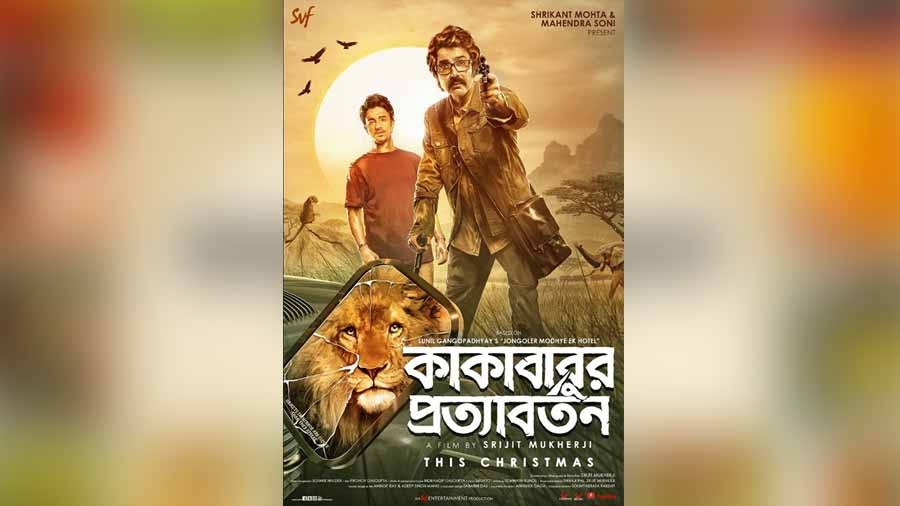
‘Kakababur Protyaborton’ is scheduled to release on February 4 Courtesy SVF
What makes it particularly interesting is that four of Srijit’s films — Autograph (2010), Jaatishwar (2014), Ek Je Chhilo Raja (2018) and Shah Jahan Regency (2019) — have an Uttam Kumar connection: Nayak (1966), Antony Firingee (1967), Sanyasi Raja (1975) and Chowringhee (1968) respectively. And with the director having announced Oti Uttam, which ‘stars’ Uttam Kumar in a pivotal role, it is worth exploring this connection.
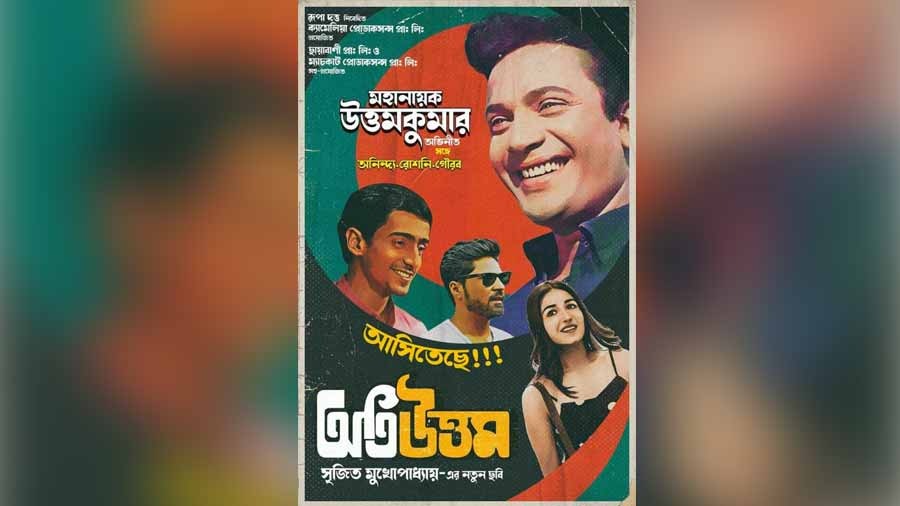
The poster for ‘Oti Uttam’ Courtesy Srijit Mukherji
‘Autograph’ is my homage to the greatest collaboration of two very different but equally important aspects of Bengali cinema
It goes without saying that none of these are ‘remakes’, which would be a lazy copout. Rather, one can see them as different takes on the same historical person or literary text. Is this something the film-maker carefully thought of/planned as homages to the Mahanayak?
“I never aspired to give a spin to any of the Mahanayak’s films. The films just grew organically. They are such interesting themes that film-makers across generations will probably have their own take on these,” Srijit says.
“The only film I wanted to pay a conscious tribute to was Nayak. But that’s as much Satyajit Ray’s film as it is Uttam Kumar’s. It’s a film that has shaped my understanding of cinema, of characterisation, screenwriting, cinematography, handling of actors... It was a debt. Autograph is my homage to the greatest collaboration of two very different but equally important aspects of Bengali cinema — the populist cinema as represented by Uttam Kumar and the internationally acclaimed arthouse cinema epitomised by Satyajit Ray.”
In Bengal, there are icons with whose works you tinker at your own peril. Srijit was doing that with Satyajit Ray, Uttam Kumar and Nayak in what was his debut. To cap it, his protagonist is an aspiring film-maker who sets out to remake Nayak.
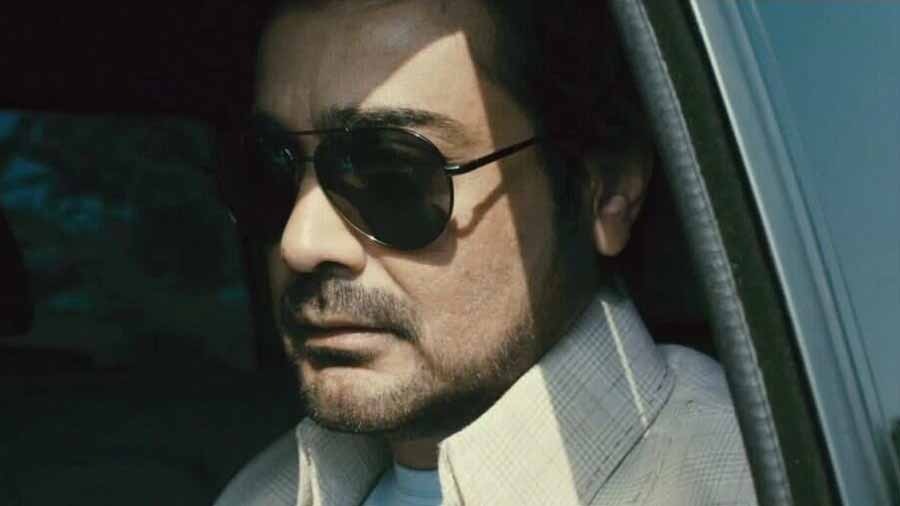
Prosenjit Chatterjee in a scene from Srijit Mukherji’s ‘Autograph’ – a seminal work of contemporary Bengali cinema Courtesy Prime Video
If Nayak proved a watershed in the career of Uttam Kumar — as Sharmila Tagore says, the star evolved as an actor with this film, becoming more aware of his craft — Autograph is a seminal work of contemporary Bengali cinema. Not only did the film blaze a trail with its mise en scene, its use of music (contemporary Bengali film music owes a huge debt to Srijit and his collaborators like Anupam Roy, Srijato, Rupam Islam and others) and its vitality, it also made a younger audience demographic buy into new Bengali films. The film-maker would go on to make better films — two of them included in this piece — but there’s no denying the influence of Autograph even more than a decade after it was made.
‘Jaatishwar’ uses multiple strands to weave a multi-layered narrative that addresses the evolution of Bengali music
If Nayak is an almost impossible act to top, with Jaatishwar and Ek Je Chhilo Raja, and to an extent Shah Jahan Regency, Srijit gives us a take that is more complex and layered in many ways than the originals. Both Antony Firingee and Sanyasi Raja lean on the undeniable aura of Uttam Kumar but in the process end up becoming little more than vehicles for the star. Srijit says, “Antony kobiyaal and Bhawal sanyasi are incredible chapters of Bengali history and since I have a deep interest in the political, social and cultural history of Bengal, these are subjects that resonated with me independent of the existing films. Chowringhee is one of the earliest novels that I read, one that actually made me fall in love with my city. Fortunately, unfortunately, Uttam Kumar was associated with all three films. But that’s it. It was just a quirk of fate — mere coincidence.”
Srijit’s approach to the life of Antony Hensman in Jaatishwar is a virtuoso act of scripting. Unlike Antony Firingee, a straightforward biopic of the poet-singer-composer, Jaatishwar uses multiple strands to weave a multi-layered narrative that addresses the evolution of Bengali music while telling a love story spanning two centuries, throwing a riveting reincarnation drama into the mix.

‘Jaatishwar’ is a multi-layered narrative that addresses the evolution of Bengali music while telling a love story spanning two centuries Courtesy Reliance Entertainment
There’s the Gujarati boy Rohit (Jisshu Sengupta) in love with the true-blue Bengali Mahamaya (Swastika Mukherjee) who ridicules him for his faltering Bengali. This inspires him to take on the challenge of mastering the language and researching the history of Bengali music, leading him to Antony Hensman through a librarian in Chandannagar, Kushal Hajra (Prosenjit Chatterjee), who claims to be a reincarnation of Antony. Kushal, along with Rohit’s research, then becomes the conduit to the poet’s life and times. There are fascinating explorations of the history and aesthetics of the kobigaan and other traditions of music in Bengal that Uttam Kumar’s Antony Firingee is not equipped to provide.
As Srijit says, “It is one of the most complex films I have made, encompassing so many aspects of Bengal’s cultural milieu. I had to do a lot of research on the evolution of Bengali music over a period of 250 years, before, during and after Antony’s lifetime, incorporating contemporary rock bands. Uttam Kumar had little to do behind my decision to make the film. What actually inspired me was Kabir Suman’s song Jaatishwar.”
Which brings us to the music. Antony Firingee is undoubtedly one of Bengali cinema’s musical classics but Jaatishwar — bookended by two Kabir Suman gems, Khudar Kasam Jaan and Jaatishwar — proves an equal match. Consider, for example, two diametrically different genres and the way they are visualised and rendered in Jaatishwar: Srikanto Acharya’s soaring rendition of Antony’s agomoni song ‘Jayo Jogendra Jayo Mahamaya’ and Rupankar Bagchi’s achingly evocative climactic ballad ‘E Tumi Kemon Tumi’.
Not surprisingly the film won the National Award for best music director (Kabir Suman) and best male playback singer (Rupankar Bagchi). Then there’s the wonderfully realised background score which adds a whole new emotional dimension to the film.
The life of the raja of Bhawal is a scriptwriter’s dream
If Antony Firingee manages to pass muster as a biopic thanks to Uttam Kumar’s performance and the music, Sanyasi Raja, despite the self-same strengths, makes a hash of both the history and the character. Ostensibly based on the intriguing case of the prince of Bhawal estate, a benevolent but debauched zamindar who is ‘cremated’ and presumed dead only to ‘return’ years later as a religious mendicant, this is one of the most incredible sagas ever to unfold in the annals of Indian judicial history. Spanning the years 1909 (when the prince ‘died’) to 1946 (when the Privy Council in London delivered its final judgment on whether or not the sanyasi is the prince), there is scarcely anything the case does not touch upon: nationalistic politics and self-governance, identity, gender, courtroom drama, medicine, toxicology, behavioural sciences, hints of murder, extramarital affair and incest, all playing around the classic ‘return of the missing heir’ theme.
Sanyasi Raja has nothing of these on offer. It stands as little more than a melodramatic work riding on Uttam Kumar.
“The life of the raja of Bhawal is a scriptwriter’s dream,” says Srijit. “Any film-maker conjuring a drama like this would probably be criticised for straining credibility. Brilliant music and songs, and the charisma of Uttam Kumar notwithstanding, Sanyasi Raja whitewashed the truth to an embarrassing degree. Rooted in history and research, Ek Je Chhilo Raja set the record straight.”
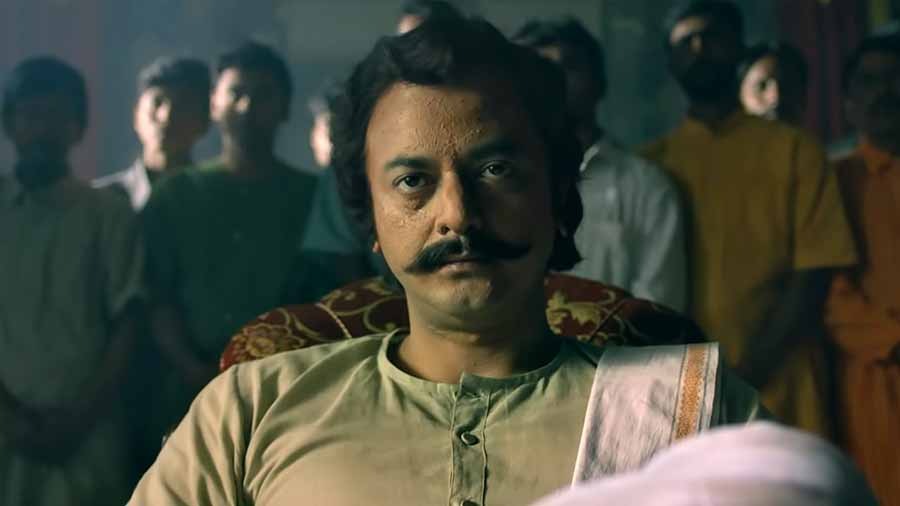
Jisshu Sengupta offers one of the finest performances in the annals of Bengali cinema in ‘Ek Je Chhilo Raja’ Courtesy Prime Video
And Jisshu Sengupta offers one of the finest performances in the annals of Bengali cinema. The physicality he brings to the role (aided in no mean measure by Somnath Kundu’s brilliant make-up work) along with Gairik Sarkar’s cinematography and the exquisite production design make Ek Je Chhilo Raja a modern-day epic that is miles ahead of Uttam Kumar’s outing.
If there is one film that for me defines the charisma of Uttam Kumar, it is 'Chowringhee'
Paradoxically enough, the very thing that makes Antony Firingee and Sanyasi Raja lesser works than Srijit’s versions of the same characters — an overreliance on Uttam Kumar to the exclusion of all else — is what makes Chowringhee work for me. I have no illusions about the merits or otherwise of the 1968 film, but if there is one film that for me defines the charisma of Uttam Kumar, it is this. As Sata Bose, Uttam is the epitome of charm in this adaptation of Sankar’s largely autobiographical novel of the same name. Though it goes without saying that the adaptation becomes less about the novel than about Uttam Kumar as Sata Bose. As Srijit says, “Chowringhee came to my life first as a novel and much later as a film. I stayed true to the spirit of the novel — which is not about Sata Bose, it’s about the hotel and the city of Kolkata.”
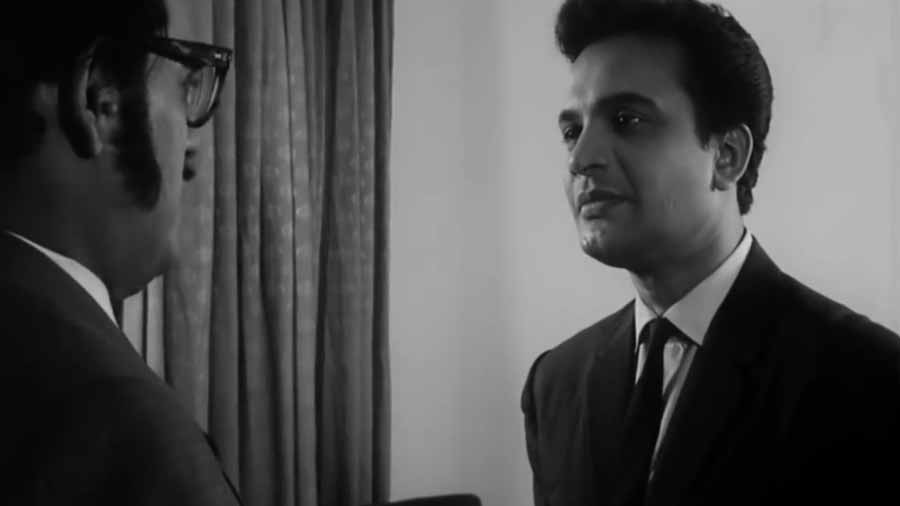
In ‘Chowringhee’, Uttam Kumar as Sata Bose is the epitome of charm Courtesy Zee 5
In fact, right at the outset, Parambrata Chatterjee’s (playing Rudra, the stand-in for Sankar) voiceover sets the ground for Srijit’s take. "Have you read Chowringhee," he says. "Yes, the one where Uttam Kumar played Sata Bose. Before that, however, it was a celebrated novel… my story is somewhat like that. In fact, you could call it a reincarnation of Chowringhee.’"
Shah Jahan Regency then becomes a more democratic adaptation of the novel with Srijit opening up the canvas to reveal characters who were given short shrift in the Uttam Kumar version: the beautiful and intellectual ‘escort’ Kamalini (Swastika Mukherjee, who runs away with the film’s acting honours); the hotel’s owner Makaranda Pal (Anjan Dutt); Mrs Sarkar (Mamata Shankar), the ‘dignified’ high-society woman who runs an NGO and has a thing for boy-toys; Arnab (Anirban Bhattacharya, who also gets to lend his voice to the enchanting Kichhu Chaini Aami), Mrs Sarkar’s son who falls in love with Kamalini with tragic consequences; the private eye Barun Raha (Rudranil Ghosh) and the gay housekeeping head Nitai Banerjee (an outstanding Sujoy Prosad Chatterjee).
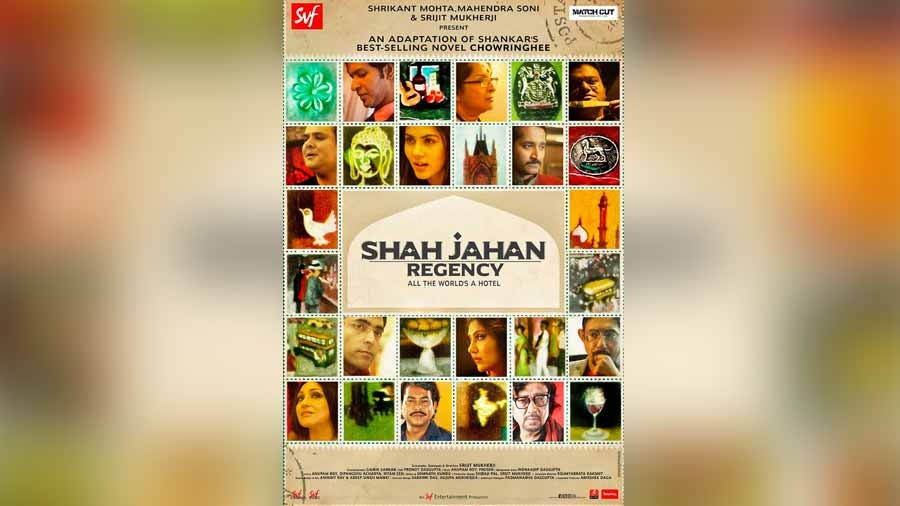
The poster of 'Shah Jahan Regency’ Courtesy SVF
However, despite the many merits of Srijit’s version over the Uttam Kumar-starrer, I for one could never overcome the feeling that in this ode to a lost city and its lost people — ‘ghosts’ as another character refers to them in the film — Srijit overcompensates in going democratic so that the film lacks a strong core that could bind it all together (which is what Uttam Kumar does in Chowringhee). But that I guess is as much a factor of the novel. For all its dramatic qualities, it probably does not lend itself easily to a film primarily because of its wide canvas of characters. If ever a text called out for an OTT series it is Chowringhee.
Uttam Kumar clouds Bengali vision like no other and justifiably so
So how much of an inspiration were the originals in Srijit’s scheme of things? "Far from being an inspiration, it has been a daunting challenge because it is difficult for the Bengali psyche to be objective about text, characters and places of historical and cultural significance the moment Uttam Kumar gets into the picture. He clouds Bengali vision like no other and justifiably so. To establish the separation of the cultural baggage of the matinee idol from the contextual specificity of these themes is a huge challenge. Since cinema is such a powerful medium, unfortunately for the average Bengali, Antony or Bhawal raja or Sata Bose means Uttam Kumar."
How Uttam Kumar helps one of his fans win his ladylove
But that doesn’t stop the film-maker from ‘casting’ Uttam Kumar, with all his star baggage, in another of his forthcoming ventures, Oti Uttam. According to Srijit, It is going to be a technical marvel. I am creating the character of Uttam Kumar through his used footage. I have written the script 53 times, beginning with an unconditional script and then back-calculated, appropriated dialogues, movements from his films, building an inventory of his shots with which the film plays out. It’s a simple plot, a love story, about how Uttam Kumar helps one of his fans win his ladylove. It showcases the charisma and brilliance of the Mahanayak in a new context. It’s going to be unique, possibly the first film that uses existing footage to create an active character.”
![According to Srijit, ‘['Oti Ottam'] is going to be a technical marvel. I am creating the character of Uttam Kumar through his used footage'](https://assets.telegraphindia.com/telegraph/2022/Jan/1643356434_whatsapp-image-2022-01-28-at-13-13-13-2.jpeg)
According to Srijit, ‘['Oti Ottam'] is going to be a technical marvel. I am creating the character of Uttam Kumar through his used footage' Courtesy Srijit Mukherji
The enfant terrible of contemporary Bengali cinema who has never shied away from taking on holy cows right from the days of Autograph, Srijit signs off, "I need to tell my stories in the way I want to.”
Shantanu Ray Chaudhuri is a publisher, editor and critic. He has worked with leading Indian authors, and books commissioned by him have won the National Award for Best Book on Cinema and the MAMI award for best writing on cinema. An avid film buff, he loves poetry and music
